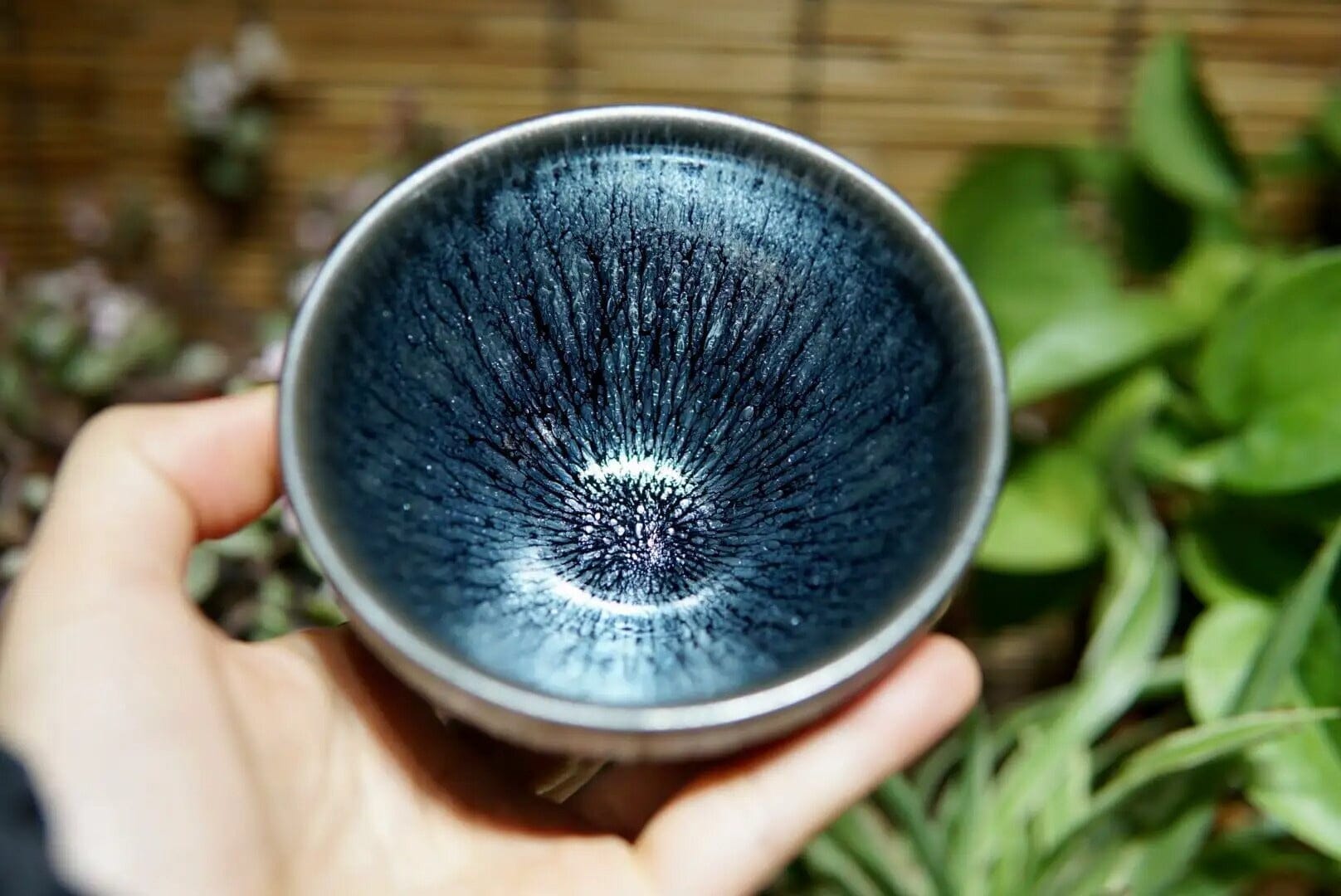A teacup enthusiast left a message today, saying that his Tenmoku teacups had been sitting in a cabinet unused for some time. When he took them out, he found that they had "rust" on them. What should he do? In fact, we have discussed this issue before, and today we will discuss it in a more systematic way.
Some teacup enthusiasts may have noticed that some Tenmoku teacups "rust" while others do not. What is the reason for this difference? In fact, what I want to say is that whether or not a teacup "rusts" is generally determined when it comes out of the kiln.
Why do some Tenmoku teacups "rust"?
In fact, this issue needs to be discussed separately. The so-called "rust" is not really "rust" in the true sense; it is just an illusion. There are two reasons for this:
- When fired at a high temperature, the patterns on the teacup have already dried and may lack crystallization or vitrification, resulting in a rust-like color that is not actually rust. Alternatively, the brown patterns created during firing can give the impression of rust.
- Oil spot teacups have patterns composed mainly of iron oxide. Teacups that lack sufficient vitrification or have not vitrified at all, if left to soak in tea for a long time without proper cleaning, may undergo a reaction with oxygen and water vapor in the air that converts bivalent iron to trivalent iron. The resulting reddish-brown color can give the impression of rust (this requires further investigation). Of course, it is also possible that tea stains have accumulated over time due to neglecting cleaning. The key lies in the crystallization on and beneath the glaze.
For fired Tenmoku teacups, if the vitrified layer completely covers the crystallization, making the surface of the teacup feel as smooth as glass, then it belongs to underglaze crystallization. On the other hand, if the crystallization is located above the vitrified layer (or has not formed a good vitrified layer) and the crystal pattern protrudes from the surface of the glaze, then it belongs to overglaze crystallization. The process of crystallization and vitrification is complex and uncertain, and it is also possible to produce a transitional state between the two (with an extremely thin vitrified layer, and the crystallization is just about to appear on top of the glaze).
For teacups with underglaze crystallization, there is a "protective layer" similar to glass on top of the pattern, which protects it from direct contact with tea and air, and thus prevents the impression of rust due to oxidation or dirt.
How should unused teacups be stored?
- First, rinse the teacup with boiling water to remove any tea stains attached to the glaze surface. Then, wash it with clean water and let it air dry in a well-ventilated area. You can also use a specialized tea cloth to wipe it clean.
- After the glaze surface is completely dry, store the teacup carefully. Also, try not to store it in damp places. If the teacup has underglaze crystallization, there is no need to take so much trouble, just store it in a place where it is not easily knocked over.
Some people use "rust" as evidence to criticize Tenmoku teacups, which is really ridiculous. Anyway, whether or not we appreciate a teacup is our own business, and we know in our hearts whether it is good or not, regardless of what others say!









Share:
Only by doing so can we become "Tenmoku experts".
Love tea without being obsessed, drink tea without getting drunk